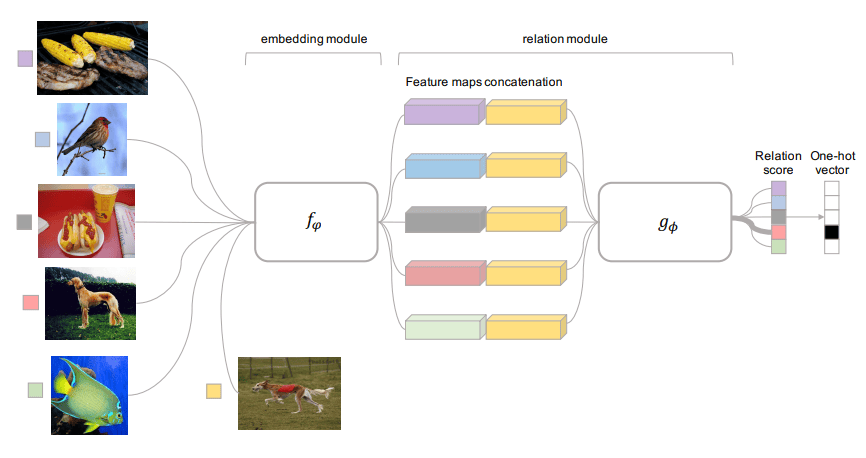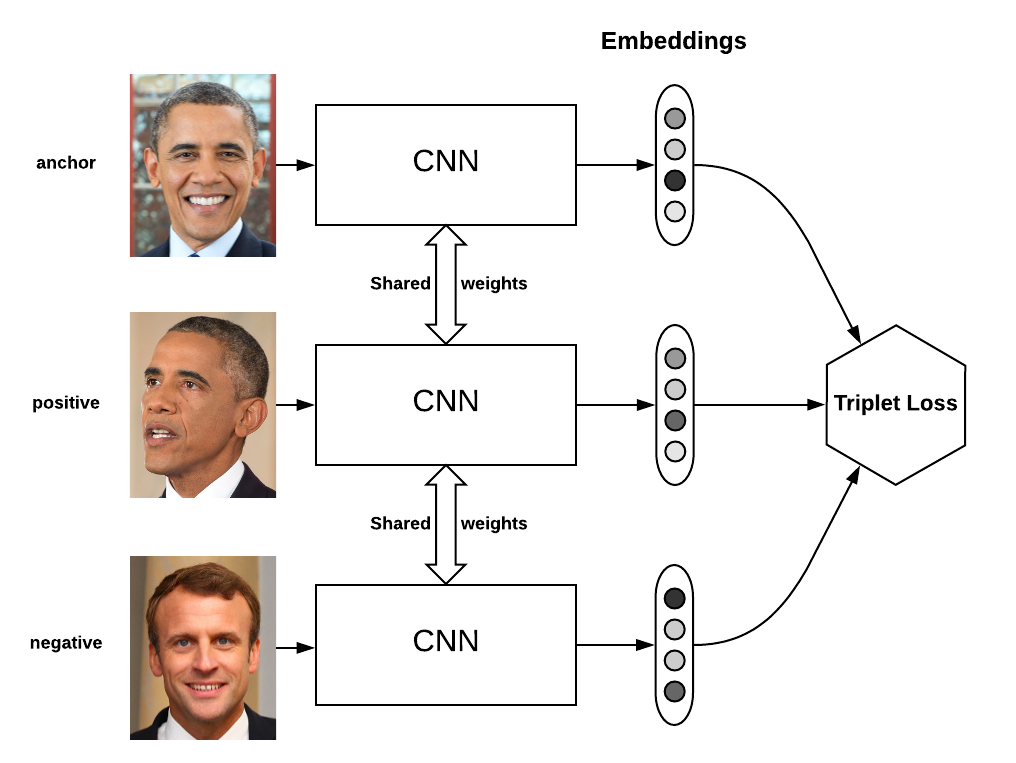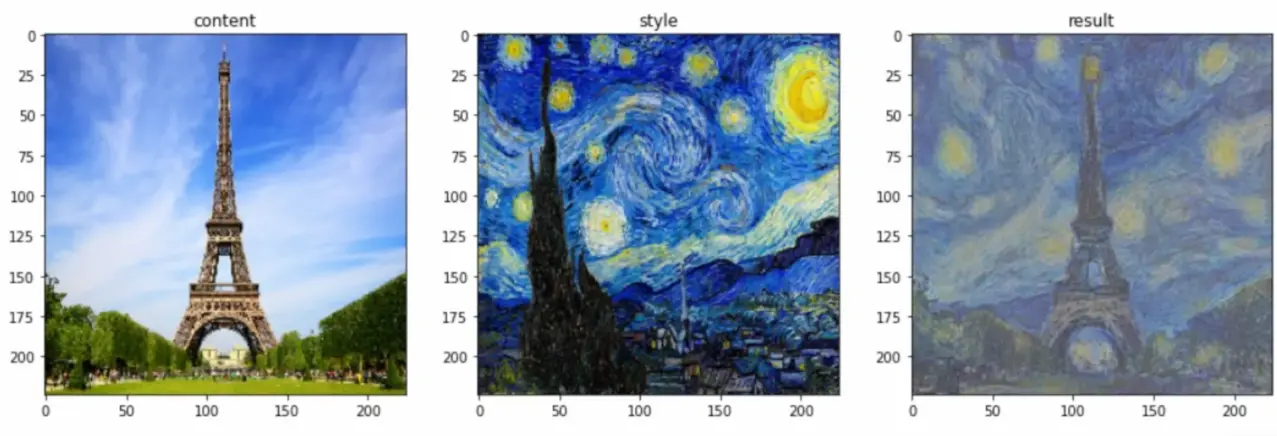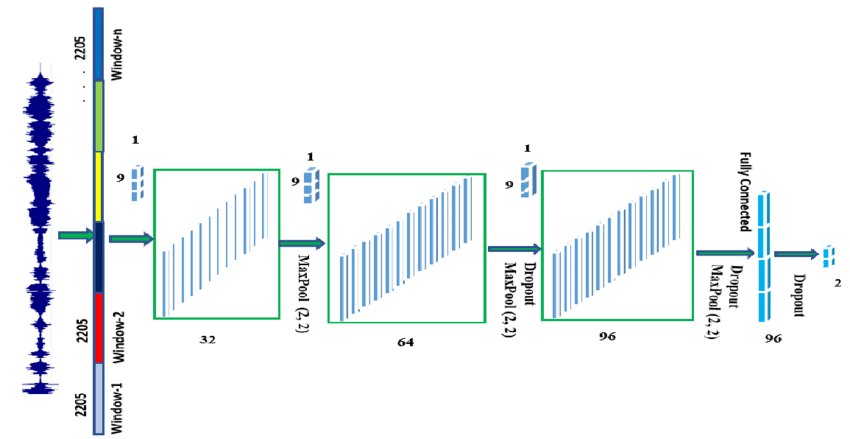Face Recognition and Neural Style Transfer
What is Face Recognition?
Face recognition is the task of identifying or verifying a person’s identity using their facial features. It can be broken down into three main categories:
- Face Detection: Locate faces in an image (bounding box).
- Face Verification: Check if two faces are of the same person (1:1 comparison).
- Face Recognition/Identification: Identify a person from a database (1:N comparison).
Real-World Applications
- Smartphone unlock (Face ID)
- Security surveillance
- Online proctoring
- Social media tagging (e.g., Facebook)
One Shot Learning
Traditional classification algorithms require many training examples per class. However, in face recognition:
- We might only have one image per person.
- The task becomes: Can the model recognize a face it has seen only once?
This is known as One-Shot Learning.
Problem Setup

- Instead of learning to classify, the model learns similarity between pairs of images.
- A distance function is trained to return a small value for the same person, and large for different people.
Siamese Network
A Siamese Network consists of two identical ConvNets (with shared weights) that compare two inputs.
Architecture Overview
- Two inputs: and
- Same CNN maps both to feature vectors and
- A distance metric (e.g., L2 norm) is applied:

Loss Function
A contrastive loss or triplet loss is used to train the network to minimize distances for same identities and maximize for different ones.
Triplet Loss
Triplet Loss is a powerful loss function for learning embeddings. It relies on triplets:
- Anchor (A): A known image
- Positive (P): Image of the same identity
- Negative (N): Image of a different identity

We want:
Where:
- is the embedding function (ConvNet output)
- is a margin to separate positive and negative pairs
Loss Function
The Triplet Loss is:
Important Notes
- Semi-hard negative mining improves convergence (choose negatives that are hard but not too hard).
- Embeddings are often normalized to unit length.
Face Verification and Binary Classification
Once we have embeddings from a trained network (e.g., using triplet loss), we can perform face verification as a binary classification task.
Verification Pipeline
- Encode both face images to embeddings.
- Compute Euclidean distance or cosine similarity.
- If distance < threshold same person.
Threshold is selected based on False Positive Rate vs. True Positive Rate using ROC curve on a validation set.
What is Neural Style Transfer?
Neural Style Transfer is the task of synthesizing an image that:
- Preserves the content of a content image
- Adopts the style of a style image
Leverage a pre-trained ConvNet (like VGG19) to extract content and style representations.

Let:
- be the content image
- be the style image
- be the generated image
Then we optimize to minimize a cost function:
What are Deep ConvNets Learning?
Deep ConvNets learn hierarchical representations:

- Early layers: edges, colors, textures
- Mid layers: shapes, motifs
- Later layers: object-level concepts
In NST, content is encoded in deeper layers, style in shallower layers.
Cost Function
The total cost is:
Where:
- : weight for content preservation
- : weight for style transfer
- Typically: , to
Content Cost Function
Let and be activations at layer for the content and generated images.
Then content cost is:
Use a deeper layer (e.g., conv4_2) for this.
Style Cost Function
Style is captured by correlations between feature maps using a Gram matrix.
Let be the activations at layer for style image. Compute Gram matrix:
Style cost is:
Then sum over multiple layers:
1D and 3D Generalizations
1D Generalization
Neural style transfer principles can be applied to audio signals:

- 1D convolution over waveform
- Preserve temporal content, apply style of another sound
3D Generalization
Applied to volumetric data such as:

- 3D MRI scans
- 3D point clouds
- Transfer spatial styles across 3D volumes
These require 3D convolutional layers and custom Gram matrix calculations.
Summary
- Face Recognition uses embedding learning (Triplet loss, Siamese networks).
- One-shot learning enables models to generalize with limited data.
- Neural Style Transfer uses a pre-trained CNN to blend content and style images using a combination of content/style loss.
- Both applications showcase the expressive power of deep convolutional networks beyond classic classification.